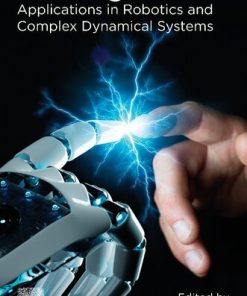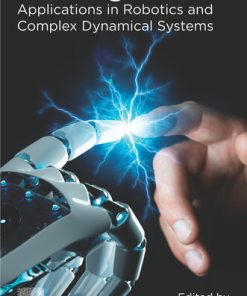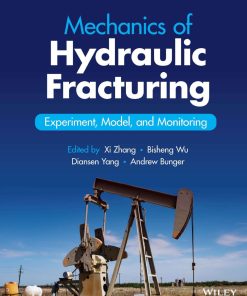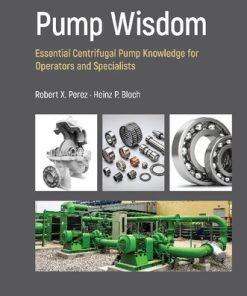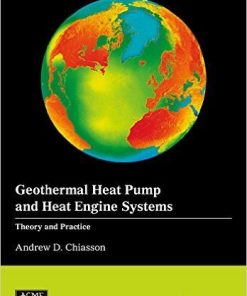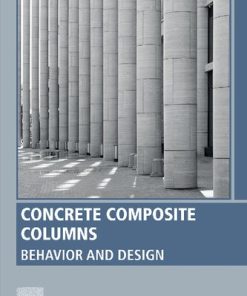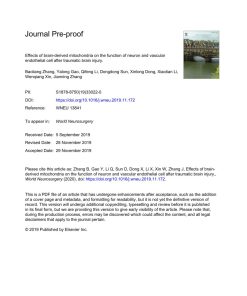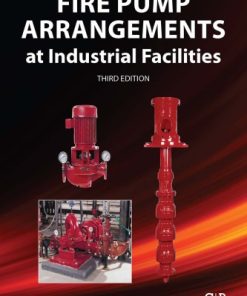(Ebook PDF) Transcritical CO2 Heat Pump 1st edition by Xin Rong Zhang, Hiroshi Yamaguchi 111838007X 9781118380079 full chapters
$50.00 Original price was: $50.00.$25.00Current price is: $25.00.
Transcritical CO2 Heat Pump 1st edition by Xin-Rong Zhang, Hiroshi Yamaguchi – Ebook PDF Instant Download/DeliveryISBN: 111838007X, 9781118380079
Full download Transcritical CO2 Heat Pump 1st edition after payment.
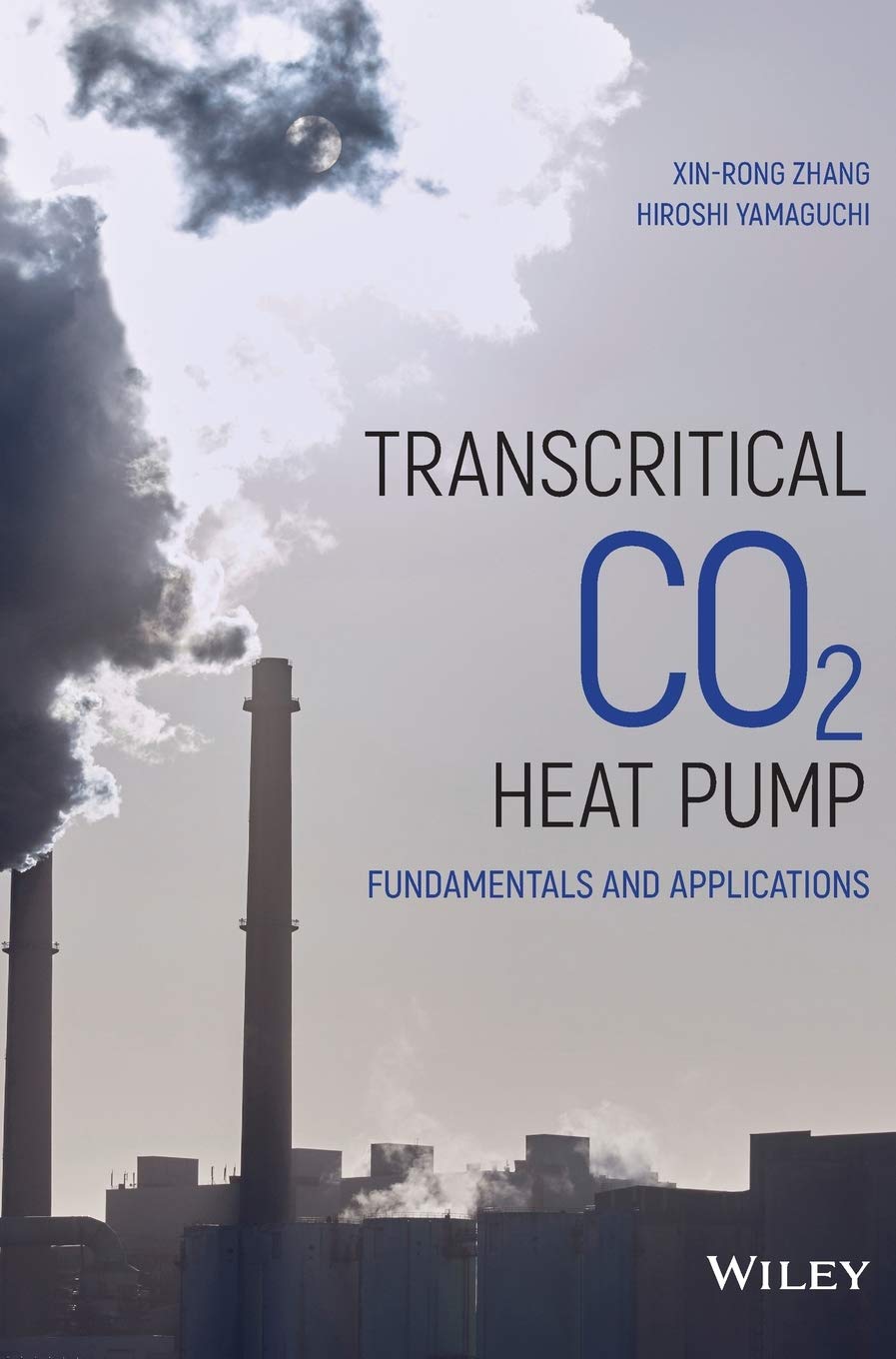
Product details:
ISBN-10 : 111838007X
ISBN-13 : 9781118380079
Author : Xin-Rong Zhang, Hiroshi Yamaguchi
Primary: Senior graduate/postgraduates on mechanical engineering/thermodynamic courses, researchers, HVAC project managers
Secondary: senior undergraduates, industry workers requiring reference
Transcritical CO2 Heat Pump 1st Table of contents:
1 Introduction
1.1 Background
1.1.1 Energy Shortage and Energy-Saving Technology – Heat Pump
1.1.2 Heat Pump Challenges and Natural Refrigerants
1.1.3 One of the Most Potential Natural Refrigerants – Carbon Dioxide (CO2)
1.1.4 Motivation for This Book
1.2 Fundamentals
1.2.1 Operating Processes of the Basic Transcritical CO2 Cycle
1.2.2 Characteristics of Transcritical CO2 Cycles
1.2.3 Modifications of Transcritical CO2 Cycles
1.3 Applications
1.4 A Guide to This Book
References
2 Current Development of CO2 Heat Pump
2.1 Introduction
2.2 CO2 Properties
2.3 Working Principle of Transcritical CO2 Heat Pump
2.4 A Brief History of CO2 Heat Pump
2.5 CO2 Cascade Heat Pump System
2.6 Advanced CO2 Heat Pump Systemwith an Ejector
Acknowledgments
Nomenclature
Greek Letters
Subscripts
Abbreviations
References
3 Fluid Dynamics and Heat Transfer of Supercritical Carbon Dioxide Cooling
3.1 Supercritical Properties
3.2 Supercritical Heat Transfer Fluid Mechanics
3.2.1 Buoyancy, Flow Acceleration and Oscillations in Near-Critical Flows
3.2.2 Outline of Remainder of Chapter
3.3 Supercritical Gas Cooling Experiments
3.3.1 Single-Tube Studies
3.3.2 Mini/Microchannel Studies
3.3.3 Summary of Experimentally Observed Effects
3.4 Supercritical CO2 Heat Transfer Correlations
3.4.1 Constant Property Turbulent Correlations
3.4.2 Krasnoschekov et al. (1970) Correlation
3.4.3 Ghajar and Asadi (1986) Correlation
3.4.4 Pitla et al. (2002) Correlation
3.4.5 Son and Park (2006) Correlation
3.4.6 Oh and Son (2010) Correlation
3.4.7 Microchannel Correlations
3.4.8 Comparison of Correlations
3.5 Supercritical CO2 Pressure Drop
3.6 Supercritical CO2 Heat Transfer and Pressure Drop with Lubricants
3.6.1 CO2/Lubricant Pressure Drop Correlations
3.6.2 CO2/Lubricant Heat Transfer Correlations
3.7 Summary and Need for Additional Research
Nomenclature
Greek Symbols
Subscripts
References
4 Boiling Flow and Heat Transfer of CO2 in an Evaporator
4.1 Introduction
4.2 Boiling Heat Transfer of Liquid CO2 in an Evaporator
4.3 Sublimation Heat Transfer of Dry Ice-Gas CO2 in an Evaporator/Sublimator
Acknowledgments
Nomenclature
Greek Symbols
Subscripts
References
5 Theoretical Analysis of the CO2 Expansion Process
5.1 Introduction
5.2 Thermodynamic Analysis of the Expansion Process in Transcritical CO2 Cycles
5.2.1 Thermodynamic Losses
5.2.2 Effect of Expansion Process
5.2.3 Real Transcritical CO2 Expansion
5.3 Theory of Ejector-Expansion Devices
5.3.1 One-Dimensional Ejector Flow Model
5.3.1.1 Critical Two-Phase Flow Model
5.3.1.2 Motive Nozzle Flow Model
5.3.1.3 Suction Nozzle Flow Model
5.3.1.4 Mixing Section Flow Model
5.3.1.5 Diffuser Flow Model
5.3.2 Ejector Efficiencies
5.4 ExpansionWork Recovery Devices for Transcritical CO2 Systems
5.4.1 Positive Displacement Expanders
5.4.1.1 Reciprocating Expanders
5.4.1.2 Rolling Piston and Rotary Vane Expanders
5.4.1.3 Scroll Expanders
5.4.1.4 Screw Expanders
5.4.2 Turbine-Type Expanders
Nomenclature
Greek Symbols
Subscripts
References
6 Transcritical Carbon Dioxide Compressors
6.1 Introduction
6.2 Sliding Vane CO2 Compressor
6.3 Screw CO2 Compressor
6.4 CO2 Rolling Rotor Compressor
6.4.1 CO2 Compressors Developed by the Company
6.4.2 Two-Stage Rolling Piston CO2 Compressor
6.5 SCO2 Scroll Compressor
6.6 SCO2 Turbo-Compressor
6.6.1 SCO2 Turbo-Compressor Applications and Challenges
6.6.2 The Two-Phase Axial-Flow Turbine
6.6.3 Application of Transcritical Turbine to CO2 Refrigeration Systems
6.7 SCO2 Piston Compressor
6.7.1 CO2 Challenges from a Compressor Perspective
6.7.1.1 High Polytropic Exponent and Discharge Temperatures
6.7.1.2 Lubricant
6.7.1.3 Discharge Plenum
6.7.1.4 Pistons and Compression Rings
6.7.2 Design Pressures
6.7.2.1 Materials
6.7.2.2 Wall Thickness and Envelope Shapes
6.7.2.3 Safety Valves
6.7.3 Performances
6.8 Future Trends
6.8.1 Two-Stage Compressor
6.8.2 Expander and Expander–Compressor
6.9 Some Key Technical Problems of CO2 Compressor
6.9.1 Mechanical Strength
6.9.2 Lubricant Problems
6.9.2.1 Miscibility of Lubricant and CO2
6.9.2.2 Lubricant Stability
6.9.2.3 Choice of Lubricant
6.9.3 Oil Dilution
6.9.4 Large Pressure Differences
6.9.4.1 Wrist Pin
6.9.4.2 Connecting Rod
6.9.4.3 Crankshaft
6.9.4.4 Bearings
6.9.4.5 Valve Plate
6.10 Conclusion and Perspectives
Nomenclature
References
7 CO2 Subcooling
7.1 Introduction
7.2 CO2 Thermodynamic Properties and Approach
7.2.1 Thermodynamic Properties of CO2
7.2.2 CO2 Subcooling Approach
7.2.2.1 Subcritical CO2 Subcooling
7.2.2.2 Transcritical CO2 Subcooling
7.2.3 Benefits of Subcooling
7.2.3.1 Second Law Approach
7.2.3.2 Capacity
7.2.3.3 COP
7.2.3.4 Energy Input
7.2.4 Subcooling Optimization
7.3 Internal Heat Exchanger
7.3.1 Introduction
7.3.2 Description and Operation
7.3.3 Revision of Research of IHX
7.3.3.1 Predicting Methods
7.3.3.2 Theoretical and Experimental Analysis
7.3.4 Experimental Analysis
7.3.4.1 Refrigerant System
7.3.4.2 Experimental Results and Discussion
7.4 Dedicated Mechanical Subcooling
7.4.1 Optimum Parameters of the DMS Cycle
7.4.1.1 Subcooling Degree
7.4.1.2 Heat Rejection Pressure
7.4.2 Theoretical Studies
7.4.3 Experimental Studies
7.5 Integrated Mechanical Subcooling
7.5.1 Optimum Parameters of the IMS Cycle
7.5.1.1 Subcooling Degree
7.5.1.2 Heat Rejection Pressure
7.5.2 Theoretical Studies
7.6 Summary
Nomenclature
Greek Symbols
Subscripts
References
8 High Temperature CO2 Heat Pump System and Optimization
8.1 Background
8.2 Basic System Design
8.2.1 Key Features in High Temperature CO2 Heat Pump
8.2.2 Overall System Design
8.2.3 Real System Construction
8.3 High Temperature Operation and Key Equipment
8.3.1 Basic High Temperature CO2 Heat Pump Operations
8.3.1.1 Water Source Heat Pump
8.3.1.2 Air Source Heat Pump
8.3.1.3 Ground Source Heat Pump
8.3.1.4 Hybrid Heat Pump
8.3.2 Compressors
8.3.3 Heat Exchanger/Gas Cooler
8.3.4 Expander
8.4 System Optimization
8.4.1 Basic System Components Optimization
8.4.2 Discharge Pressure Optimization
8.4.3 System Optimization
8.5 Applications and Challenges
8.5.1 Heating and Cooling
8.5.2 Other Industrial Sectors
8.5.3 COP Analysis and Comparison
8.6 Commercialized Products by High Temperature CO2 Heat Pump
8.7 Summary
Acknowledgments
Nomenclature
Greek Symbols
Subscripts
References
9 Performance Analysis and Optimization of a CO2 Heat Pump Water Heating System
9.1 Introduction
9.2 System Configuration
9.3 System Modeling
9.4 Numerical Solution
9.5 Conditions for Performance Analysis and Optimization
9.6 Performance Analysis Under Periodically Steady State
9.7 Performance Enhancement by Extracting TepidWater
9.8 Performance Analysis Under Unsteady State
9.9 Performance Estimation Under Unsteady State
9.10 Performance Optimization Under Unsteady State
9.11 Other Issues on Performance Analysis and Optimization
Nomenclature
Subscripts
Abbreviations
References
10 Transcritical CO2 Heat Pump Space Heating
10.1 Attempts Toward Space Heating Used a Transcritical CO2 Heat Pump
10.2 Thermodynamic Analysis of the Subcooler-Based CO2 Heat Pump
10.3 Comparison Between the Subcooler-Based CO2 System and the Cascade Cycle
10.4 Optimal Discharge Pressure
10.5 Optimal Medium Temperature
10.6 Conclusion and Prospects
People also search for Transcritical CO2 Heat Pump 1st:
what is co2 heat pump
what is transcritical co2
what is transcritical co2 refrigeration
co2 heat pumps for residential applications
transcritical c02
Tags:
Transcritical CO2,Heat Pump,Xin Rong Zhang,Hiroshi Yamaguchi
You may also like…
Engineering
Engineering
Learning Control: Applications in Robotics and Complex Dynamical Systems 1st Edition Zhang
Engineering
Engineering - Mechanical Engineering & Dynamics
Mechanics of Hydraulic Fracturing: Experiment, Model, and Monitoring 1st Editon
Engineering
Uncategorized
Engineering - Civil & Structural Engineering



